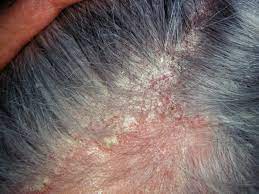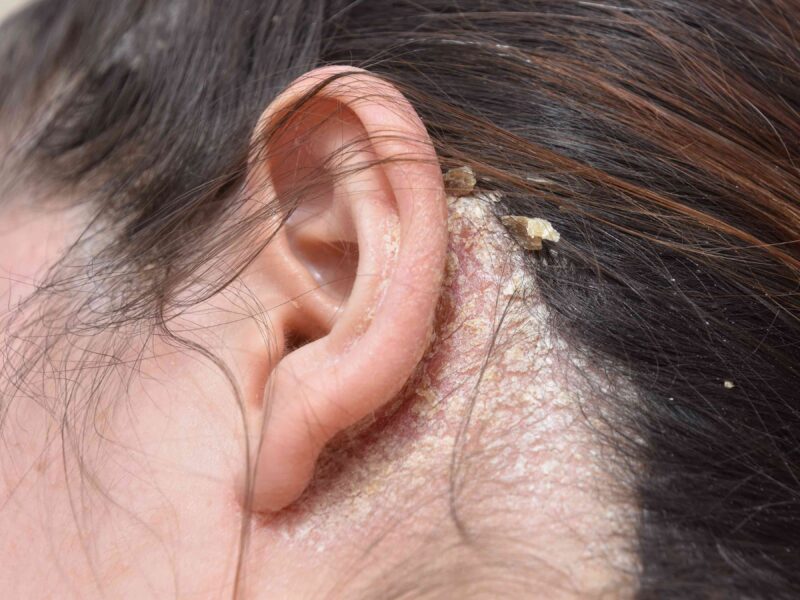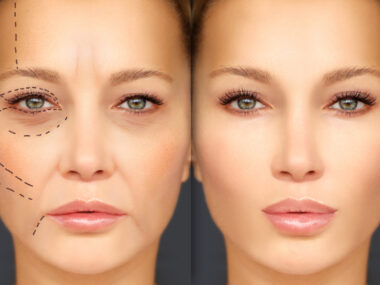Seborrheic dermatitis is a chronic inflammatory skin condition that primarily affects areas of the body rich in oil glands, such as the scalp, face, and chest. While it is not contagious or life-threatening, seborrheic dermatitis can cause significant discomfort and embarrassment due to its symptoms, including redness, itching, and flaking.
This essay explores the causes, symptoms, and treatment options for seborrheic dermatitis, with a focus on its impact on the scalp.
Understanding Seborrheic Dermatitis

Seborrheic dermatitis is a common skin disorder characterized by inflammation and excessive production of sebum, the oily substance produced by the sebaceous glands.
While the exact cause of seborrheic dermatitis remains unknown, it is believed to result from a combination of genetic, environmental, and immunological factors. Factors such as hormonal changes, stress, certain medications, and underlying medical conditions can exacerbate symptoms of seborrheic dermatitis.
Symptoms of Seborrheic Dermatitis
Seborrheic dermatitis typically presents as red, itchy, and flaky patches of skin, which may vary in severity and location depending on the individual. Common symptoms of seborrheic dermatitis on the scalp include:
- Scaly Patches: Thick, greasy scales or crusts that may form on the scalp, often accompanied by itching and discomfort.
- Redness and Inflammation: Areas of the scalp may appear red, swollen, or inflamed, particularly around the hairline, behind the ears, and on the eyebrows.
- Itching and Irritation: Persistent itching and burning sensations on the scalp can be exacerbated by scratching and rubbing.
- Hair Loss: In severe cases, excessive scratching and inflammation may lead to temporary hair loss or thinning in affected areas.
Impact of Seborrheic Dermatitis on Quality of Life
Seborrheic dermatitis can significantly impact an individual’s quality of life, affecting their physical comfort, emotional well-being, and social interactions. Chronic itching and discomfort can lead to sleep disturbances, irritability, and decreased productivity.
Additionally, visible symptoms such as flaking and redness may cause embarrassment and self-consciousness, leading to social withdrawal and avoidance of social activities.
Treatment Options for Seborrheic Dermatitis
While there is no cure for seborrheic dermatitis, various treatment options can help manage symptoms and reduce flare-ups. Treatment approaches may include:
- Topical Antifungal Agents: Antifungal creams, lotions, or shampoos containing active ingredients such as ketoconazole, selenium sulfide, or zinc pyrithione can help reduce inflammation and control the growth of yeast on the scalp.
- Corticosteroid Preparations: Topical corticosteroids can help reduce inflammation and itching associated with seborrheic dermatitis. However, long-term use of corticosteroids should be avoided due to the risk of skin thinning and other side effects.
- Tar-based Shampoos: Shampoos containing coal tar or tar derivatives can help soothe itching and reduce inflammation on the scalp. Tar-based shampoos work by slowing down the growth of skin cells and reducing the production of sebum.
- Anti-inflammatory Agents: Topical creams or ointments containing ingredients like hydrocortisone or calcineurin inhibitors can help reduce inflammation and itching associated with seborrheic dermatitis.
- Medicated Shampoos: Regular use of medicated shampoos containing ketoconazole, selenium sulfide, or zinc pyrithione can help control symptoms and prevent flare-ups of seborrheic dermatitis on the scalp.
In addition to topical treatments, lifestyle modifications and self-care practices can also help manage symptoms of seborrheic dermatitis:
- Gentle Cleansing: Wash the scalp regularly with a mild, fragrance-free shampoo to remove excess oil, dirt, and flakes. Avoid harsh shampoos or cleansers that may strip the scalp of its natural oils and exacerbate inflammation.
- Avoid Trigger Factors: Identify and avoid triggers that may exacerbate symptoms of seborrheic dermatitis, such as stress, cold weather, harsh chemicals, or certain skincare products.
- Moisturize the Scalp: Apply a non-comedogenic moisturizer or scalp oil to the affected areas to help soothe dryness and reduce itching. Choose products that are free of fragrances, dyes, and other potential irritants.
- Manage Stress: Practice stress-reducing techniques such as mindfulness, meditation, yoga, or deep breathing exercises to help manage stress and prevent flare-ups of seborrheic dermatitis.
Conclusion
Seborrheic dermatitis is a chronic inflammatory skin condition that can affect the scalp and other areas of the body rich in oil glands. While it is not life-threatening, seborrheic dermatitis can cause significant discomfort and embarrassment due to its symptoms, including redness, itching, and flaking.
By understanding the causes, symptoms, and treatment options for seborrheic dermatitis, individuals can effectively manage their condition and improve their quality of life. With a combination of topical treatments, lifestyle modifications, and self-care practices, individuals with seborrheic dermatitis can minimize symptoms and prevent flare-ups, allowing them to live more comfortably and confidently.










